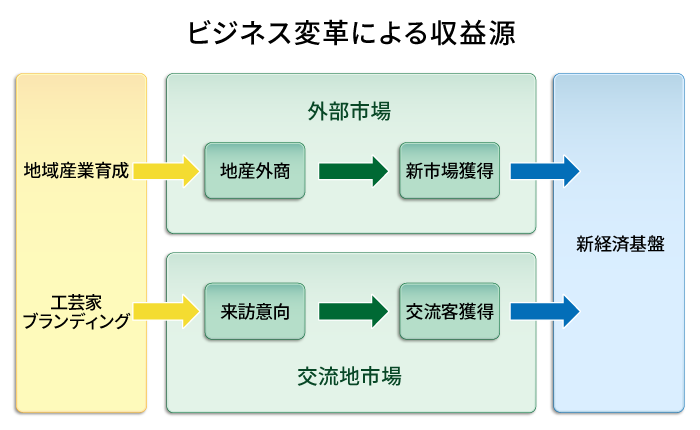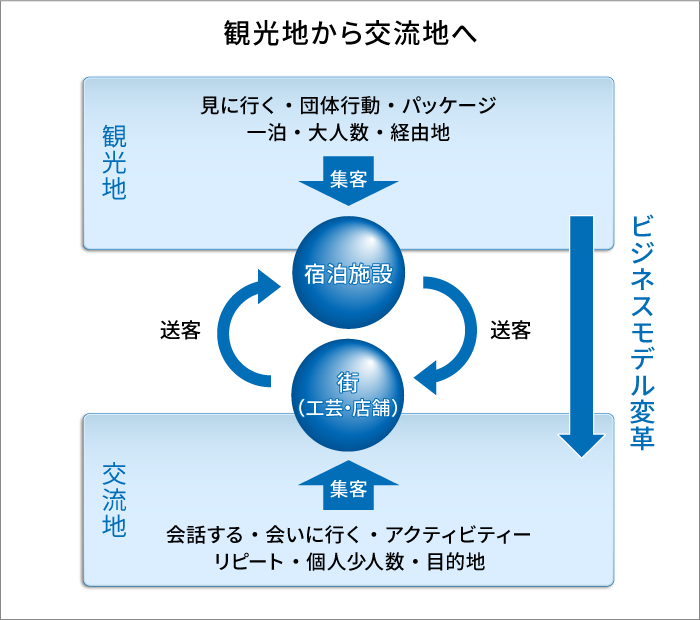In October 2019, a collaborative product was released between young Ainu craftspeople from Akan Lake Hot Springs in Hokkaido and the BEAMS label <fennica>, a select shop that continues to introduce handmade crafts from across Japan. Despite coinciding with a typhoon's arrival at launch, the products were snapped up by many consumers. We will explore the background of this project over a three-part series from the perspectives of regional revitalization, SDGs, and project planning. This is the first installment. We introduce initiatives transforming tourism business through "local production for external sales," aiming for sustainable growth.
Tourist Destinations Can Get "Name-Brand Purchases" Too
The national focus on regional revitalization stems from the shockwaves caused by the 2014 "Japan Revitalization Council" announcement of "cities at risk of disappearing." Half of all municipalities nationwide were deemed at risk. Meanwhile, Japan's population is projected to decline to 88 million by 2065, signifying a drastic reduction in Japan's market resources. From a tourism perspective, an additional threat looms: the "2025 problem," marked by the late baby boomers entering advanced old age.
The long-established business model of the travel industry is no longer viable. Akan Lake Hot Springs attracts 600,000 overnight guests annually, but the average length of stay is just 1.00 to 1.01 nights. It has fallen into a "stopover" position, where visitors stay barely one night before moving on to the next tourist destination.
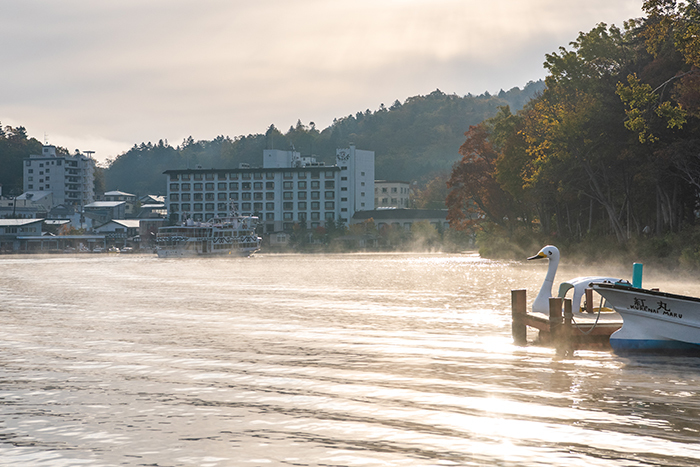
Lake Akan Scenery
"Big Hokkaido" was the 1977 catchphrase. Indeed, one must not underestimate Hokkaido's vastness. People think, "Let's go on a Hokkaido trip," and tour scenic destinations. Consequently, visitors end up traveling long distances across the vast prefecture. Getting one night's stay in places like the forests of Eastern Hokkaido is considered good. If this continues, the market size—the source of visitors—will shrink, leading to decline.
Of course, no tourist destination is sitting idly by. A survival-of-the-fittest battle begins here. In other words, the goal isn't "a trip to Hokkaido," but "a trip to Lake Akan." Unless a place becomes a destination that is specifically "named" and actively chosen, it will be difficult to survive going forward.
Boosting "Lake Akan Concentration" with the "Interaction Destination" Model
Breaking free from being a "stopover" destination means capturing "repeat visitors" and encouraging them to "stay longer." The goal is to narrow the destination focus from "Hokkaido" to "Lake Akan" and increase the share of per-person travel expenditure allocated to that specific location.
To create such "brand loyalty," we must possess a unique character unmatched by other destinations. Crucially, this involves offering shared experiences in the region's distinctive style—something modern travelers seek. Sightseeing that's merely about seeing things doesn't foster loyalty or human connection. When genuine interaction between people occurs, the element of "going to meet someone" is added to the travel experience. This creates strong bonds with customers, leading to destination selection by name and generating repeat visitors.
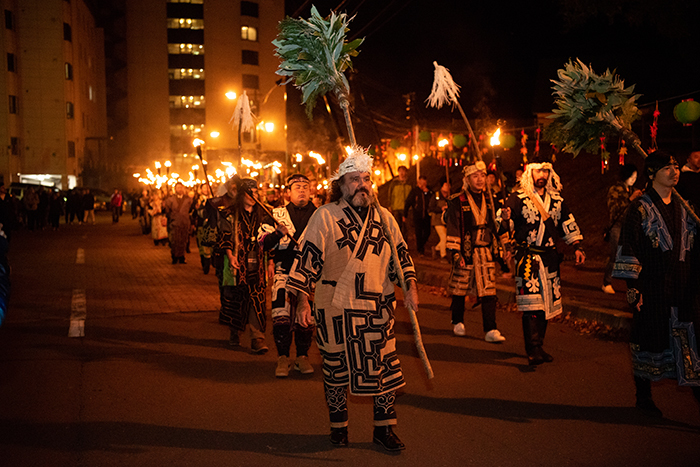
Ainu ethnic festival scene
Does Lake Akan truly possess a "unique character" capable of fostering human connection? Anyone who has visited Lake Akan can easily imagine the answer. Lake Akan Onsen is home to one of Hokkaido's premier Ainu Kotan (villages/settlements). It nurtures a unique culture, offering a rich sense of foreign culture despite being within Japan. While combinations of forest, lake, and hot springs exist elsewhere in Hokkaido, it is this Ainu culture that drives the demand for Lake Akan Onsen and forms the core of the Lake Akan brand.
Tourists aren't the only market
By the way, whether it's moving away from one-night stays or attracting repeat visitors and long-term residents as a place for exchange, the goal is nothing less than sustaining and growing this region's economy. A tourist destination consists of lodging facilities and the surrounding "town." Without an appealing "town," you cannot inspire the desire to stay overnight here. Of course, without lodging facilities, you cannot keep customers in the "town" either.
When considering the "town" essential to the tourism economy, two key points emerge. The first is: "Are the tourists visiting right now the only customers we should be targeting?" The second is: "When the ratio of repeat visitors and long-term guests increases, is it sufficient for the town to continue selling only 'souvenirs'?"
Visitors to Akan Lake Hot Springs, including day-trippers, reach approximately one million annually. Is this a large enough target market? For example, by targeting markets like the Tokyo metropolitan area and selling local products outside the region, market resources can be maximized, potentially capturing value unattainable within a one-million-person market. If the goal is to bring positive revenue to the town's economy, the immediate tourists are not the only market.
For regional products to gain recognition in external markets, items designed solely to appeal to the "I want to buy this as a souvenir of visiting this place" need won't suffice. They must be products that people genuinely "want" – items consumed in daily life, products that integrate into people's lifestyles. This shift in product strategy is also effective for repeat customers.
To secure future customers as a destination for exchange and to increase the town's revenue, it becomes crucial to adopt a product strategy that moves beyond souvenirs and advances local production for external sales.
Local production for external sales: A billboard for building a regional brand
As stated above, what Lake Akan Onsen needs is to hone its unique character. And to build everyday-use products that realize local production for external sales. Where these two focuses converge lies the "Ainu crafts" passed down for generations by the Ainu people. By updating Ainu crafts through the hands of the Ainu people, moving beyond souvenirs, and realizing local production for external sales, we can build a "brand" that resonates throughout Japan and ultimately the world.
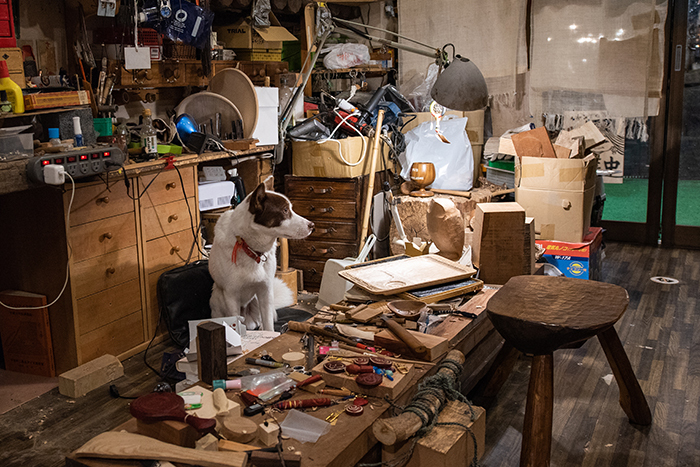
Ainu Craft Workshop
However, simply aspiring to this goal presents hurdles that cannot be overcome overnight: how to permeate the brand's value and how to secure distribution channels. Collaboration with major global brands became the key to surmounting these hurdles.
The approach chosen to connect these collaborations to "journeys to meet" and "realizing exchange destinations" was "craft artist branding." Lake Akan has historically produced master woodcarvers, and even today, it is home to a concentration of artists possessing exceptional craftsmanship. For a settlement of about 1,000 people, it was a miraculous treasure trove of talent. You could call it "Lake Akan Next Generation." By branding them, a path became visible to simultaneously achieve local production for external sales and the transformation into an exchange destination.
Motivation Building to sustain the initiative.
Our rallying cry: "We'll send customers your way!"
Now, medium-to-long-term challenges for regional revitalization often lack strong reality for those tasked with addressing them. Even when threats are objectively approaching, if the current situation isn't yet severely problematic, people won't feel motivated to sweat over invisible dangers. In such cases, even if new initiatives for revitalization are started, they quickly lose momentum. This is the crisis of heading down the path predicted for cities at risk of disappearing.
When challenges and strategies become clear, the real work lies in "motivation building." What mindset must the community adopt to move toward solving these problems? Identifying this and building motivation is essential.
Akan Lake Hot Springs has a history where hotels attracted group tourists, and as those guests circulated through the town, souvenir shops also prospered. Consequently, a perception took hold that "hotels attract visitors and send them to the town." This created a structure where lodging facilities seemed to hold a dominant position over the town and became the center of decision-making.
However, if local production for external sales builds an economic foundation and attracts a new type of customer as a destination for exchange, it becomes possible for the town itself to attract visitors and send them to lodging facilities. This represents a reversal of roles. The phrase "Let's send customers their way!" became the motivational foundation illuminating Akan Lake Hot Springs' future.
(Next time, we'll explore Teaming—the key to advancing this project—while touching on the "hints for the future" that Ainu culture offers to modern society.)



